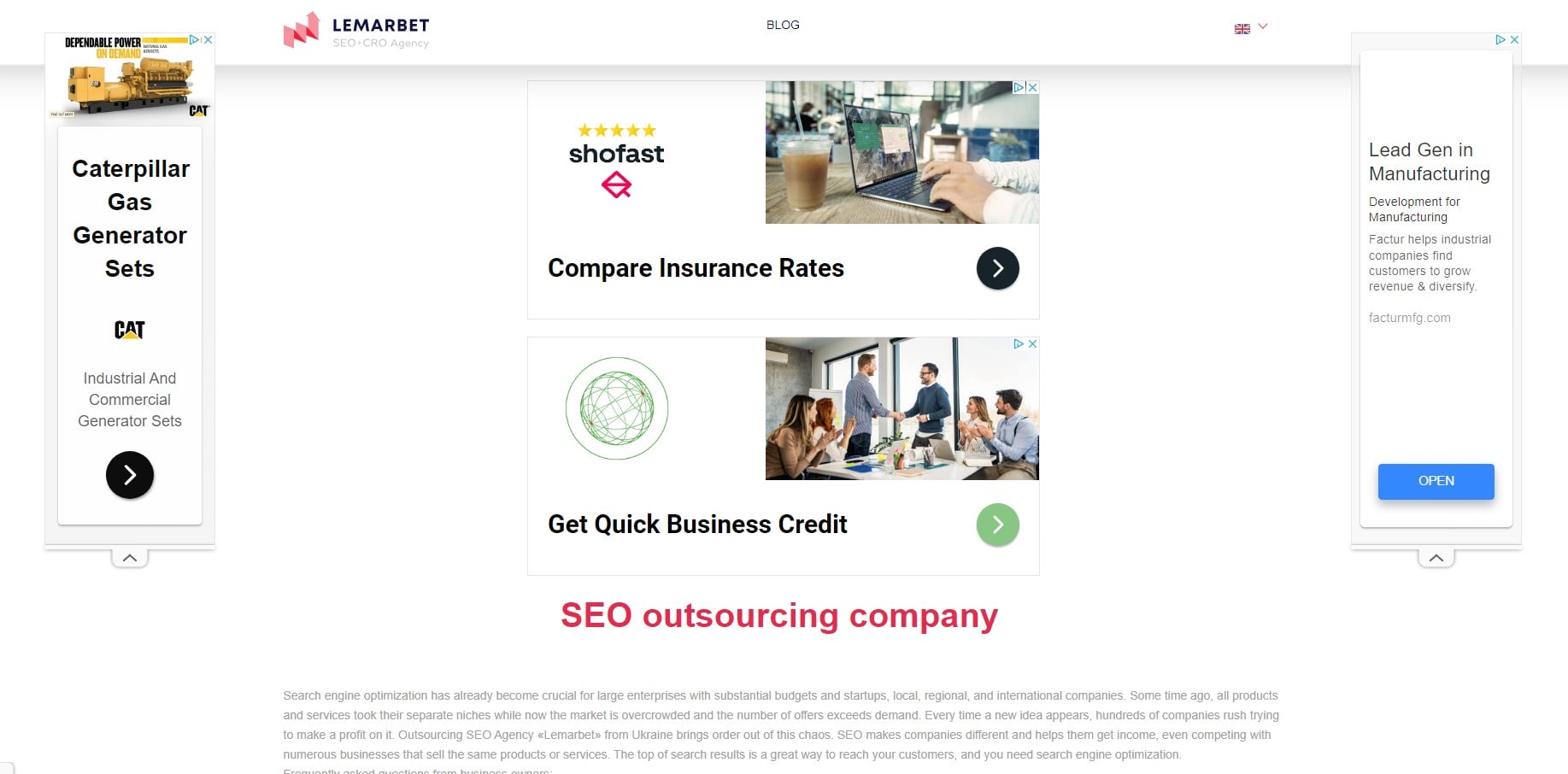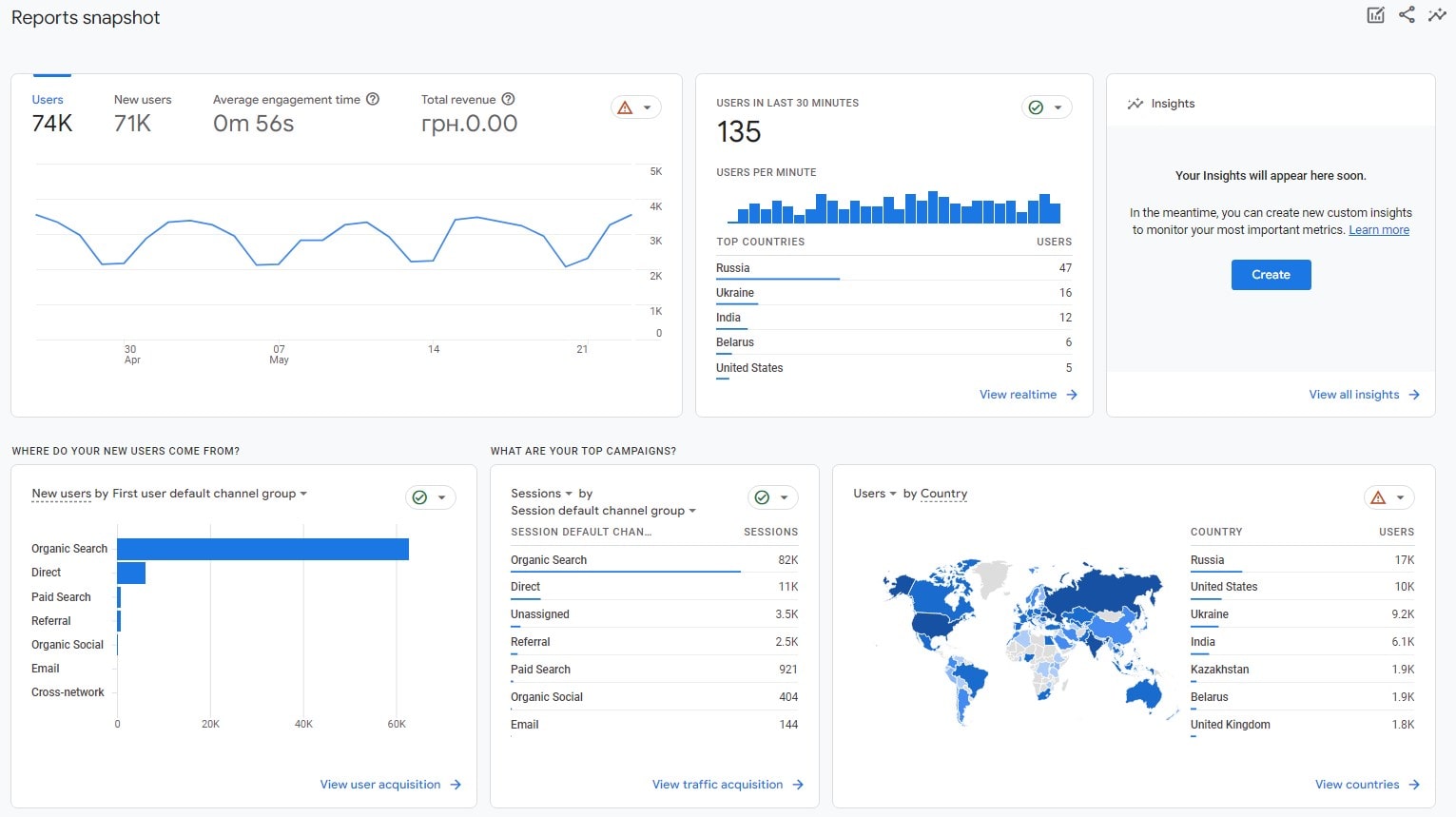Embrace the power of data with “Data-driven decision-making: A Guide.” In an era dominated by figures and facts, mastering data-driven decision-making (3DM) becomes an essential skill for businesses striving for success. ⚡ We’ll delve into:
- The core tenets of 3DM
- Its vital role in sectors like healthcare, finance, and marketing
- Real-world applications and implications
Our guide will demystify the complexities of 3DM, offering clear, succinct explanations supported by practical examples. Discover how to transform raw data into valuable insights, fostering a more comprehensive understanding of the business landscape, its nuances, and the trends shaping it.

Incorporate 3DM into your own strategy, and unlock its potential to drive your decisions, fueling growth and sharpening your competitive edge. To get started on your 3DM journey, why not give Plerdy’s tool a try? It’s an excellent resource for Conversion Rate Optimization (CRO) and User Experience (UX), helping you navigate the intricacies of data analysis with ease and accuracy. Ready to steer your business into a future rich in data and driven by decisions? Start the journey with us. Let’s make every decision count. ⚡ 📈
What Is Data-Driven Decision Making?
Data serves as the compass, guiding the decision-making process. It provides clear, objective insights, thus reducing uncertainty and enhancing accuracy.
Consider two specific industries: Healthcare and Retail. In healthcare, data-driven decision-making might involve utilizing patient statistics to optimize treatment plans, while in retail, analyzing customer behavior data could facilitate product development or marketing strategies.
Essential components of a robust data-driven decision-making process include:
- Data Collection: Gathering comprehensive, relevant information.
- Data Analysis: Interpreting data for patterns, trends, and insights.
- Decision Implementation: Applying insights to make informed decisions.
- Result Evaluation: Monitoring outcomes to refine future decisions.
Leveraging data in decision-making leads to strategic, evidence-based choices. It steers organizations away from hunches and assumptions—towards concrete, fact-based actions. As a result, businesses become more competitive, efficient, and innovative. The data-driven approach to decision-making is reshaping not just single departments but entire organizational structures and cultures. Be part of this transformative journey—embrace data-driven decision making and witness your organization evolve and thrive.
Understanding the Importance of Data-Driven Decision Making

Imagine an orchestra conductor—each decision made in real-time based on immediate feedback from the musicians. Here, data is the feedback—guiding each move, dictating every pivot, and informing every strategy.
Take the financial sector, for example. Banks use data to evaluate risk profiles and set interest rates, creating a win-win situation for both the institution and the borrower. Meanwhile, tech companies like Amazon and Google leverage data to tailor user experiences, offering personalized recommendations and search results.
The potency of data-driven decision-making boils down to a few key points:
- Improved Efficiency: Data cuts through assumptions, paving the way for direct, effective action.
- Enhanced Accuracy: With data, decisions are rooted in facts, reducing the risk of costly errors.
- Strategic Advantage: Companies using data make sharper decisions, outperforming competitors.
- Customer Centricity: Data helps understand customer behavior, leading to superior service and products.
It’s the conductor that orchestrates the symphony of business activities, guiding each note towards a harmonious performance. It’s time to take the baton—harness the power of data, and drive your decisions towards success.
Grasping the Types of Data for Decision Making
Picture a farmer using weather data to plan crops or a digital marketing expert, analyzing web traffic data to fine-tune strategies.
Data types central to decision-making fall under two main categories:
- Quantitative Data: This is numerical data offering objective metrics. It’s like a football coach tracking player statistics to inform team strategies.
- Qualitative Data: This data type is descriptive, providing deeper insights into behaviors, opinions, and motivations. Imagine a restaurateur taking in customer reviews to refine the menu and service.
Each data type serves a purpose in the decision-making process:
- Reliable Decisions: Quantitative data provides measurable, factual basis for decisions, eliminating guesswork.
- In-Depth Understanding: Qualitative data uncovers why certain patterns emerge in the quantitative data, offering rich, contextual insights.
- Comprehensive View: Together, they provide a 360-degree view of the situation, ensuring a more balanced, holistic decision-making approach.
In the context of data-driven decision-making, understanding and effectively using these data types is akin to mastering musical scale notes. They form the foundation of your symphony, empowering you to create a harmonious blend of effective decisions.
Familiarizing with Key Technologies for Data-Driven Decision Making

Dive into the era of data-driven decision-making, where technology serves as the engine powering this transformative approach. Take stock market investors who rely on advanced analytical tools to read market trends or city planners using Geographic Information Systems (GIS) for urban development.
Pivotal technologies enabling data-driven decision-making include:
- Data Warehouses: These are large storage systems that consolidate data from various sources. Think of a global retail chain pooling sales data from all locations.
- Data Mining Tools: These extract valuable insights from vast datasets. Picture a telecommunication company analyzing call records to improve network coverage.
- Business Intelligence (BI) Tools: They convert raw data into actionable information. Envision an e-commerce firm using BI tools to track customer buying patterns.
- Predictive Analytics: This technology predicts future trends based on historical data. Consider an insurance company forecasting claim amounts to set premium rates.
Each note—each piece of data—contributes to the data-driven decision-making symphony. Embrace these technologies, unlock the power of data, and allow informed decisions to guide your organization to success.
Establishing a Data Collection and Management System
Establishing a solid data collection and management system is like tuning the orchestra in the symphony of data-driven decision-making. Each instrument, or data source, must be calibrated to ensure harmony. Reflect on a logistics company tracking shipment data or a university surveying student satisfaction data.
Key steps to setting up a system include:
- Identify Data Sources: Pinpoint the key sources of
Data relevant to your decision-making process. Consider a hotel chain, leveraging data from customer reviews, booking platforms, and internal records.
- Define Data Collection Methods: Select the most appropriate techniques to gather data.
- Implement Data Management Tools: Utilize systems for data organization and storage, such as data warehouses. Picture a healthcare facility storing patient records in a secure digital system.
- Set Up Data Quality Measures: Validate and clean the data regularly to maintain accuracy and reliability. Imagine a polling agency cross-verifying collected data to avoid skewing the results.
By fine-tuning your data collection, you equip your orchestra with well-crafted instruments, ready to play the sweet symphony of informed decision-making.
Create beautiful visualizations with your data

Creating beautiful visualizations with data is akin to an artist painting a masterpiece—it brings clarity to complexity, making decision-making a more intuitive process. Think of a climate scientist illustrating global temperature changes with a heat map or a financial analyst showcasing market trends with a line graph.
Key steps to transforming your data into compelling visuals include:
- Understand Your Data: Grasp the nature and structure of your data. For example, a social media manager might analyze the dataset of user engagements across different posts.
- Select the Right Visualization: Choose the most appropriate format to represent your data. A health department might use a bar chart to illustrate the number of people vaccinated in different age groups.
- Use Visualization Tools: Employ software like Tableau or Power BI. Picture a digital marketing team crafting an interactive dashboard to track campaign performance.
- Make It Accessible: Ensure your visualization is easy to understand. Imagine a news agency creating an infographic for a diverse audience.
By painting with data, you create a captivating visual narrative that can guide decision-making. It’s like composing a symphony—you’re bringing data to life, making each note, each data point, tell a compelling story.
Interpreting and Analyzing the Collected Data

Strategy
Interpreting and analyzing collected data provides businesses with a flashlight in the labyrinth of decision-making. Consider a sports franchise examining player stats to draft new talent or a multinational corporation using market data to expand into emerging economies.
Mastering this interpretive dance with data involves a few strategic moves:
- Data Cleaning: First, scrub your data clean of errors and outliers. Imagine a weather forecasting agency ensuring the accuracy of sensor readings.
- Exploratory Analysis: Delve into the data to understand its basic properties and trends. Picture a logistics firm investigating shipping times and costs.
- Hypothesis Testing: Craft and test hypotheses based on your data. A cosmetics company might hypothesize that online sales spike during holiday seasons.
- Predictive Analysis: Use your data to forecast future trends. Envision a stock brokerage firm predicting market movements using historical data.
- Actionable Insights: Finally, draw conclusions that guide business decisions. A smartphone manufacturer, having analyzed consumer preferences, could design a more appealing product.
Interpreting and analyzing data is like reading a novel – every number, every data point tells a story. Listen carefully, and they’ll whisper the steps to take on your path towards enlightened decision-making.
Identify key areas
Identifying key areas where data-driven decision-making can add value is like finding fertile ground to sow the seeds of business success. Pinpoint these areas, and you’re well on your way to reaping the rewards of informed choices.
Visualize a hotel chain using data to optimize room pricing or a software development firm analyzing bug reports to prioritize updates. These are some key areas to focus on:
- Customer Behavior: Dig deep into consumer data to comprehend buying patterns. An online retailer could decipher shopping trends to tailor their marketing campaigns.
- Operational Efficiency: Crunch numbers from daily operations to streamline workflows. A manufacturing plant might reduce machine downtime through predictive maintenance using data.
- Market Trends: Stay ahead of the curve by analyzing market data. A fashion brand could anticipate seasonal trends and adjust their design strategies accordingly.
- Employee Performance: Dive into employee productivity data to drive performance. A call center could deploy data analysis to improve response times.
- Financial Analysis: Make dollars and sense of financial data to drive profitability. A venture capital firm might use data to identify profitable startups for investment.
In the grand symphony of data-driven decision-making, these key areas are the high notes that resonate with strategic harmony, conducting the business orchestra towards an opus of success.
Data Targeting
Data targeting in data-driven decision-making is like a master chef selecting the finest ingredients for a gourmet meal. In this case, the ingredients are specific data sets that can spice up decision-making processes.
Consider an automotive company seeking to maximize its advertising campaign. It zeroes in on specific data – past purchasing behavior, geographical location, online activities – to engage the right audience. Here are ways businesses can use data targeting:
- Demographic Analysis: A fast-food chain could target younger demographics who are likely to be attracted to fast, convenient meals.
- Behavioral Targeting: An online bookstore may analyze users’ browsing history to suggest personalized book recommendations.
- Geotargeting: A clothing brand could target weather-specific apparel to customers based on their geographical location.
- Contextual Targeting: A travel agency might target ads for tropical getaways on websites and forums discussing summer vacation plans.
By selectively harnessing data, businesses can drive decisions that hit the bullseye, turning potential leads into loyal customers. Just like a chef crafting a culinary masterpiece with precision, effective data targeting shapes data-driven decision-making into a strategic asset, serving up the perfect recipe for business success.
Collecting and analyzing data
Data-driven decision-making revolves around a two-fold process: meticulous data collection and insightful analysis. These twin engines power the vehicle of informed decision-making, driving businesses to the pinnacle of success.
The first stage involves harvesting valuable data, similar to a farmer gathering crops. For instance, a healthcare organization might collect data on patient outcomes, treatment efficacy, and health trends. The nature of data collected is as diverse as:
- Survey responses.
- Social media metrics.
- Sales records.
- Customer feedback.
- Web analytics.
The second stage – data analysis – brings the true power of data to light. It’s akin to a miner sifting through raw materials to unearth precious gems. This stage transforms raw data into actionable insights. A retail company, for example, might analyze purchase history and customer reviews to identify top-selling products and areas for improvement.
In essence, by collecting and analyzing data, businesses can navigate the labyrinth of uncertainty, unearthing pathways to improvement and growth. It’s this dual commitment to data collection and analysis that fuels the engine of data-driven decision-making.
Applying Data Analysis to Business Decisions

Data-driven decision-making catapults businesses into the future by harnessing the untapped power of data analysis. With a treasure trove of data at their fingertips, companies can uncover insights that shape strategic decision-making, injecting fresh vitality into every business function.
Consider the realm of digital marketing. A company can leverage data from web analytics, customer behavior, and engagement metrics to personalize marketing campaigns, optimize content delivery, and hone in on the most effective channels. Through this, they generate a superior customer experience and boost their brand visibility.
Some other areas positively impacted by data analysis include:
- Streamlining operations – By analyzing workflow and performance data, companies can identify bottlenecks and inefficiencies.
- Enhancing product development – Customer feedback and market trends data fuel innovation, ensuring products that resonate with target audiences.
- Optimizing resource allocation – Financial and human resources data guide prudent resource distribution, maximizing ROI.
In essence, applying data analysis to business decisions isn’t just a strategy—it’s a revolution. It’s an approach that cuts through guesswork and intuition, providing a rock-solid foundation for decisions that drive success. It’s the lifeblood of the modern business landscape, and it’s redefining what’s possible in every sector.
Keeping Up with Future Trends and Predictions in Decision Making
Forecasting the future with data-driven decision-making is the new standard for businesses aiming to thrive in the modern landscape. Employing data as the guiding star, organizations not only navigate their current circumstances but also chart the course for future success.
For instance, a company in the renewable energy sector can utilize historical weather data, energy consumption rates, and evolving technology trends to steer their product development and investment strategies. This forward-thinking approach is to immerse yourself in the power of data-driven pivotal to maintain a competitive edge and foster sustainable growth.
Here are some ways data-driven decision-making can bolster future trend prediction and strategic planning:
- Uncovering hidden patterns – Machine learning algorithms can sift through enormous datasets, spotting trends beyond human cognition.
- Precise demand forecasting – Sales, demographic, and market data coalesce to predict future product demand with impressive accuracy.
- Risk mitigation – By analyzing risk-associated data, businesses can forecast potential pitfalls and devise preventive strategies.
Data-driven decision-making is not just a passing trend; it’s an evolution in the way businesses operate and plan for the future. It paves the way for predictive decision-making models, where data guides every step, empowering organizations to confidently stride into the future, ready to seize opportunities and conquer challenges.
Conclusion
Embracing a data-driven strategy is a significant step, an absolute boon for businesses seeking a competitive edge. You’ve navigated through the complexities of data-driven decision-making (3DM) with us—tackling its principles, examining its relevance across sectors, and delving into real-world examples. ⚡🥇
Our voyage has underscored the transformative potential of 3DM. You’ve seen how it can guide your business across shifting sands, offer clear paths in muddled terrains, and spark growth.
Remember, your business data is a precious resource—a goldmine of insights ready to be unearthed. Yet, data is valuable only when accurately interpreted and effectively put into action. That’s where Plerdy’s tool for SEO & UX analysis comes in handy, enabling you to understand and implement data with ease.
So, there it is our comprehensive guide on data-driven decision-making—a journey from understanding to action, from raw data to informed choices. All set to write your own success story with data at its heart? Start leveraging your data with Plerdy today. Let’s shape the future of your business—data-driven, calculated, and sure. Let’s make every decision count.⚡
